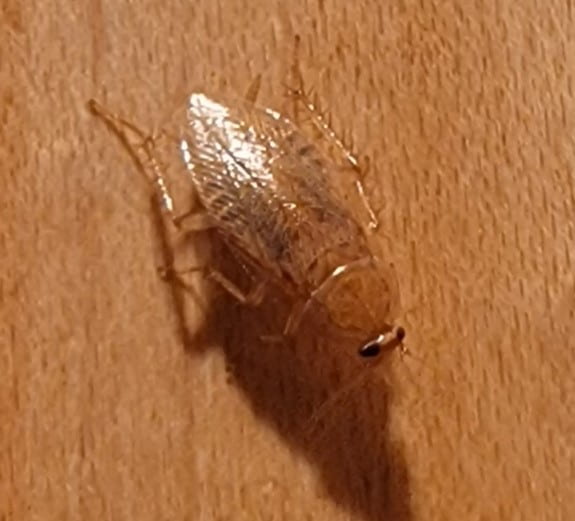A recent uptick in sightings of the little tawny field cockroach along the eastern coast of the US, particularly on Long Island, has inspired me to explain this trend.
Worldwide, there are around 4,600 species of insects in the group Blatodia, which we call cockroaches. This group also includes termites (for reasons why click here). Only a few cockroach species are considered pests of the human environment. Most cockroach-type insects are plain, unspecialized dwellers of a wide variety of environments from caves to forest leaf litter.
The tawny field cockroach, also known as the Mediterranean spotted cockroach (species name Ectobius pallidus), is native to southern Britain, France and Western Europe. It has been introduced to other parts of the world including North America, where it was first identified on the coast of Massachusetts in 1948. Although this species is not native, it is not identified as an invasive species, because it is not known to cause harm to its new habitats or other species.
Adult tawny cockroaches are typically around 12-15mm (up to ½ inch) in length and are tan to light brown in color with darker flecks of color on their delicate wings. They have long antennae, and the wings extend beyond the tip of their abdomen. Females are usually larger than males and have a wider body.
These cockroaches are primarily outdoor insects and are commonly found in grassy fields, meadows, and woodland edges. They feed on a variety of plant material and, in their home range they are thought to be an important food source for birds and other animals. Like many insects, they are attracted to lights at night and may enter homes and buildings in search of food and shelter, especially in the autumn months. In this way, the tawny field cockroach is similar (and related) to our native Pennsylvania wood cockroach.
Tawny field roaches are not considered a major pest species. They do not pose significant health risks, nor do they reproduce inside homes, restaurants or other buildings. In contrast, German and American cockroaches are two important examples of what we call “peridomestic” insects, which literally means “in and around human habitations”. These two larger species are pests associated with structures, the built environment and unsanitary conditions.
So, while you might encounter tawny field cockroaches on the shores of Long Island, throughout New England or in the Great Lakes region (and many other places in the US), there’s not much to worry about. This pretty little cockroach has little in common with its bigger, filthier, fear-inducing cousins.

